Make no mistake, Cliff Islanders are nice. Nine-year-old Rufus MacVane will tell you all about that.
“There’s Bobby, he’s a super nice guy. He helps people a lot and he’ll always wave to you. And then there’s Crowley. I call him Crowley, his real name is Dave. . . . He’s a really nice guy too. Everybody’s really nice here. He’ll always wave to you and he helps people. He puts in wharfs. And there’s Steve Little. He drives around in a golf cart, always helping with the ACE (the Athletics, Conservation and Education program). It’s a big thing out here. The guy who owns it is named Roger, another really nice guy . . .”
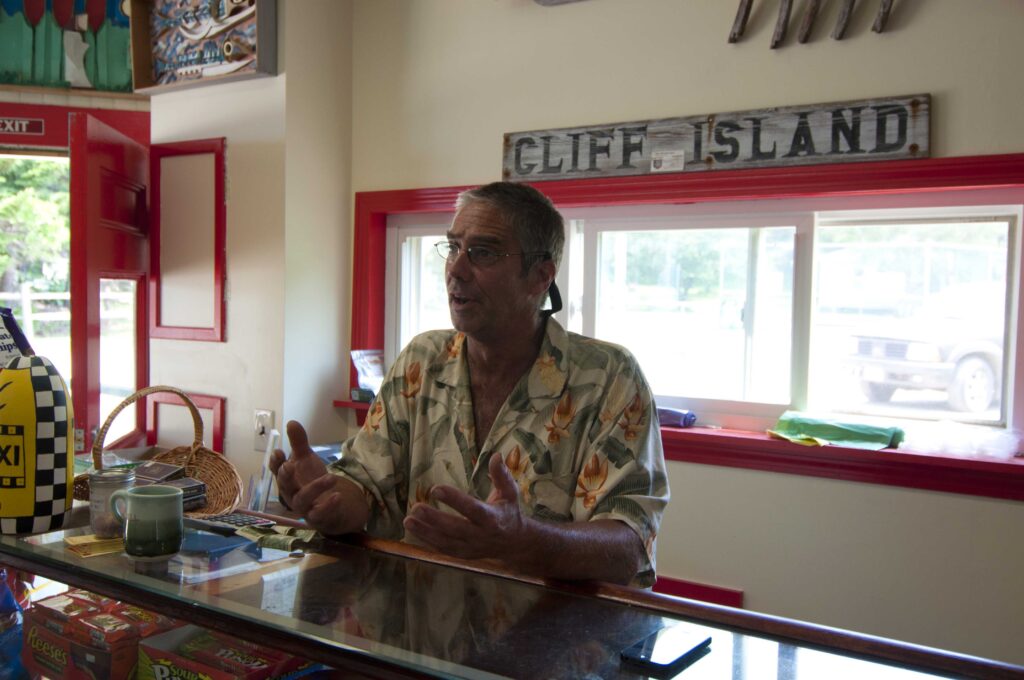
It’s probably not surprising that Rufus, a towheaded ball of energy who vacillates between rambunctious adolescent and meditative adult, can name off everyone who lives on the island he calls home. There are only about 10 families that live on Cliff year-round. And, at least according to Rufus, the MacVane roots go back deep into the island’s history.
I met Rufus and his younger brother, Cole, at a spot called Stone Beach or Rocky Beach depending on who you ask. For my friends and I, out on Cliff Island for a day trip, the only things on the itinerary were finding a nice spot to catch some sun, getting to know the island and enjoying a picnic. And we were just wrapping up the latter when the MacVane boys came stamping through the beach scrub, buckets in hands, bouncing eagerly down a narrow dirt path.
“Hullo,” shouted Rufus when he saw us – three strangers putting bottles and utensils and Tupperware back into our tote bags — near the entrance to the path.
“What are you doing?” he asked with an endearing mix of childish curiosity and, simultaneously, the assertiveness of someone who’s just found you in his living room.
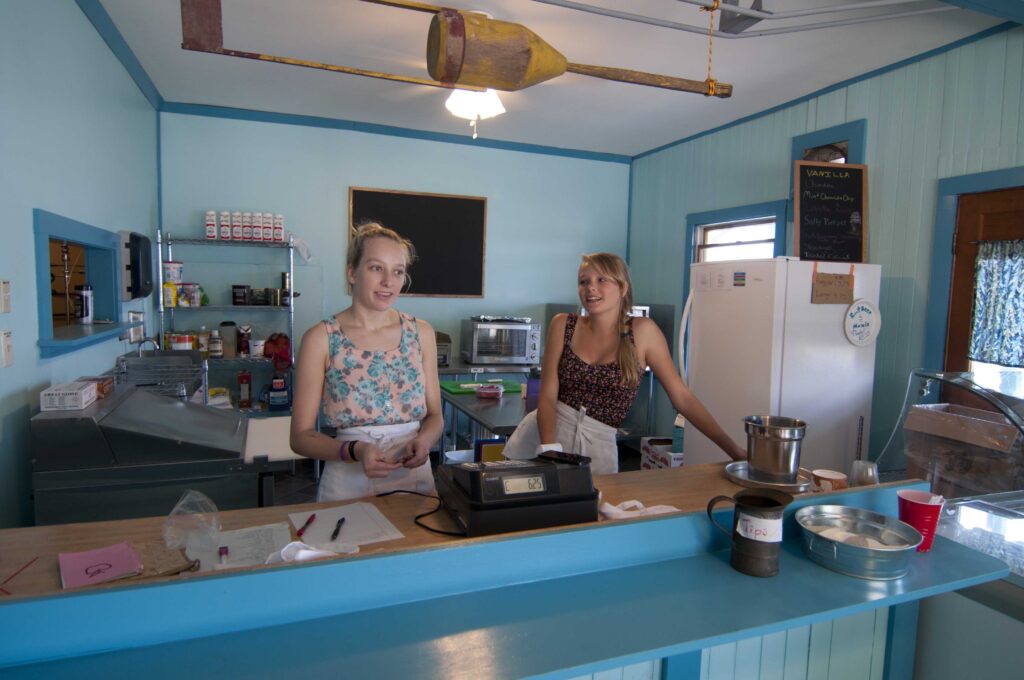
I said we had just finished lunch and then I explained my charge: I told Rufus I write for newspapers and that, through some bit of fortune, I had landed an assignment that saw me visiting various islands in Casco Bay. This summer, I told him, I was spending the day on Cliff Island.
“So, what have you done so far?” he asked.
I thought back. Most of our small cadre of travelers had bailed that morning, leaving just myself and two friends to catch the 10 a.m. ferry from the Casco Bay Lines terminal on Portland’s waterfront. Four boats make the run to Cliff on summer weekends (compared to six on weekdays) and it happened that the ferry we took was a “mail boat,” meaning it made the rounds among the bay’s larger islands before arriving at Cliff.
Situated south of Chebeague and about 6 miles northeast of the Old Port, Cliff Island is the last stop for Casco Bay Lines ferries going down the bay. About equidistant from the Portland peninsula and the jutting fingers of Harspwell Neck, Cliff is on the outer fringe of the Calendar Islands, with only Jewell and Ragged islands along with a few outcroppings situated farther from the mainland. Compared to its nearest neighbors (Chebeague and Long) the island is relatively small. Though people say it’s shaped like an “H,” I think it looks more like a giant outrigger canoe sitting in the bay: one long landmass and a much smaller, parallel landmass connected by a low-lying strip.
While direct passage from downtown Portland to Cliff usually takes about an hour, our mail run trip took twice as long. On the way we had brief stops at Peaks, Little and Great Diamond, Long and Chebeague. Our longest layover, on Chebeague, was half an hour, and my friends and I took the opportunity to stretch our legs. Walking lazily through the 90-degree air to some unknown beach, we talked about the day’s plans. From everything we had read it seemed that Cliff, a part of the city of Portland, was a small and quiet community. We had read that there were a few good beaches, a tennis court, a general store and a one-room schoolhouse serving six students. We had read there was a small network of unpaved roads – in fact Cliff happens to be the largest island in the bay with no paved roads – and we had read that much of the island has been permanently protected through ACE and other conservation arrangements. So as we waited for the ferry to depart Chebeague and begin its final leg to Cliff, I confirmed our simple plans and checked our stocks of wine, water, bread, cheese and other snacks. Lunch, learning and lounging were about the only things on the docket when we arrived around noon on Cliff.
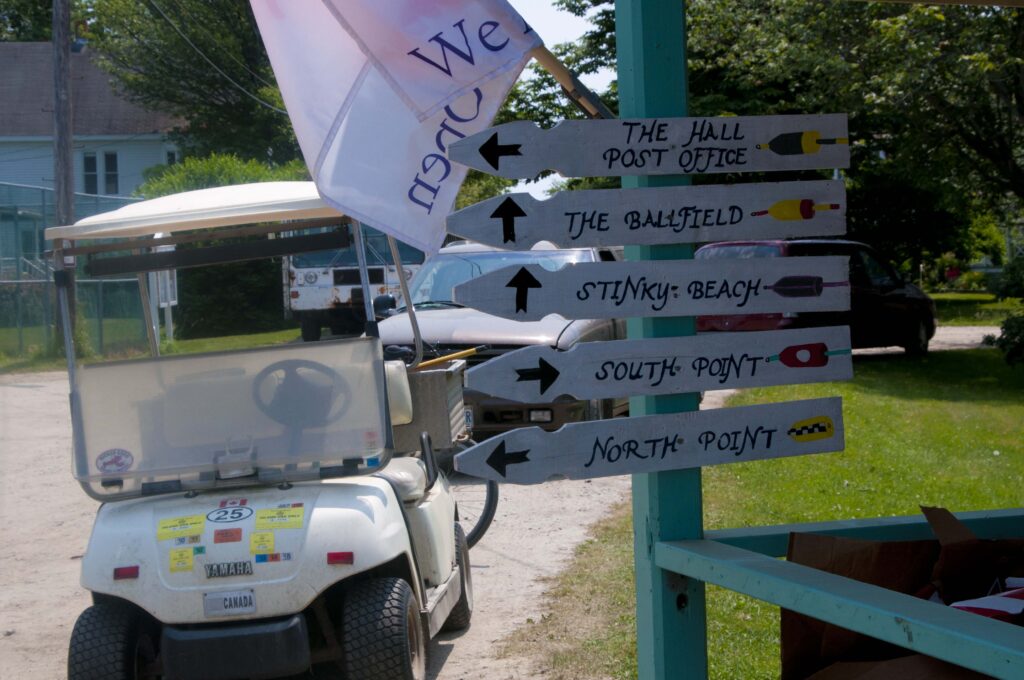
I said as much, though in fewer words, to Rufus. By this point he and I and 4-year-old Cole were walking out a long rocky promontory to where the boys had left their lobster trap. To be more accurate, the boys were bounding over the rocks like swift hermit crabs while I was picking my way carefully and even then contorting into odd positions every time I slipped on the abundant dulse and rockweed.
It was clear these kids were true islanders. Shirtless and shoeless, with bleached hair and tanned skin, they conquered the wet coastline. Because I hoped to photograph the brothers hauling up their trap, I did my best to keep up, calling out to them to continue our conversation as the distance between us grew.
When we reached the end of the headland and I caught up with the boys, Cole was scaling a barnacle-covered bluff while Rufus was inspecting the trap — submerged about a foot in a deep tidal pool — for lobsters or crabs.
“Nothing,” he said, frustrated. “But something got to the bait.” He scanned the wire trap until he found the answer. “Look,” he said, “it’s a hole in the bottom. That must be it.”
Clamping the metal in his young hands he closed the hole and then released the trap, letting it sink back down to the bottom of the pool. As Cole watched from the bluff, Rufus took a seat and pulled up the bucket of bait — pollack and mackerel he caught earlier that morning — and began filling fresh bait bags.
“So, who else d’you talk to today?” he asked, looking up at me and squinting his eyes in the bright sun.
I thought back. Pulled in by the sign advertising ice cream, my buddies and I had gone to the general store, just a few yards from the dock, as soon as we’d stepped off the boat. Jenn’s Cliff Island Store and Cafe, as we might have suspected, was the hub of the island community and a perfect place to talk to some knowledgeable locals. I told Rufus about my conversation with one of the store’s proprietors (and Jenn’s husband), Bill Green.
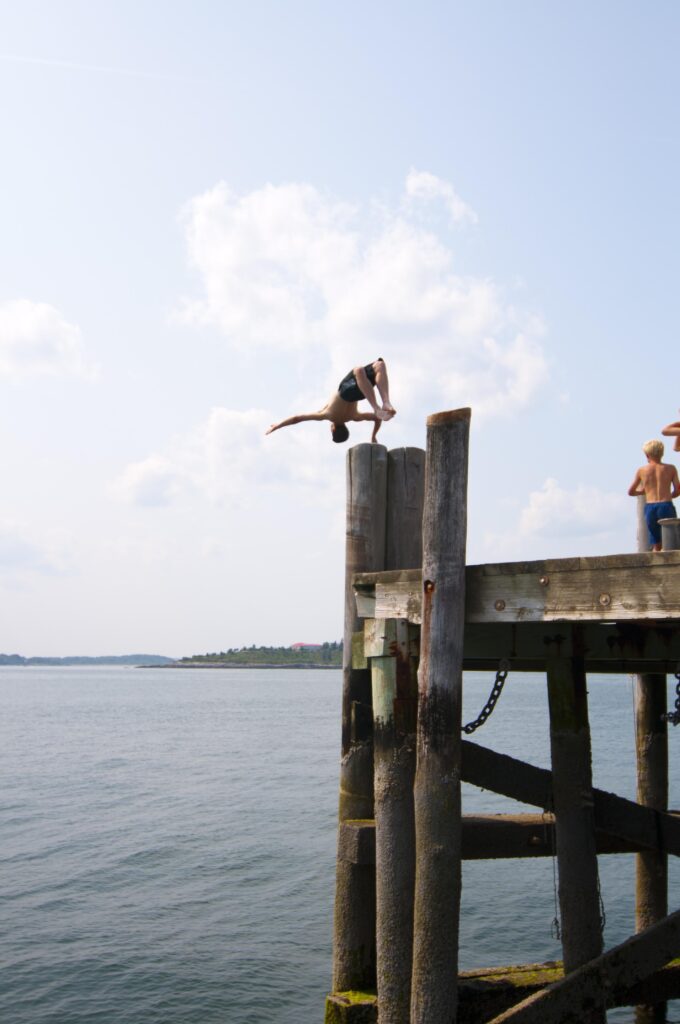
“We just opened up three weeks ago,” Bill told me. “We started this past winter working on it. It’s been really great.”
“The next eight weeks will be very busy,” he said optimistically.
Cliff Island, like all the inhabited islands in the bay, has a distinct communal identity and a distinct economy, which might seem odd given the island is technically a part of Portland. Bill explained that the ferry layovers were a godsend, delivering as many as 100 people at a time to his doorstep.
“Now that we have the store,” he said, “we’re going to have it open year-round. We’ll be able to have milk and staples for the island people, which they haven’t had in 20 years (since) the person who was here before; he was only open like eight weeks (out of the year) then he shut it down. So we’re trying to create more of a community-based operation.”
Bill, whose family “dates way back in the history of the island,” met Jennifer Blomquist five years ago. “She’s originally from Seattle,” he told me. “She’s not originally an islander, but she is now,” he said, laughing. “All of this is her undertaking,” and he lifted his arms to indicate the business in which we stood.
Bill made it clear the store isn’t just about retail success. It’s about helping neighbors and community building.
“There’s about 45 of us in the winter. In the summer there’s between 200 and 300 people . . . Probably, in the winter we’ll just be open part time, but you know everyone on this island is so close, if anyone needs anything all they have to do is call the house and I’ll come down and open up. We’re not keeping it open to make money, we’re keeping it open for the people on the island.
“My father is a great guy. He’s 84 years old and he’s the island constable. He’s got a little boat and he’s going to go to town once a week for us to pick up ice cream. And another fella that’s got a bigger boat is going to go once a week for us too . . . When our freight comes, all the people who live here, like the summer kids, they just jump right in and help bring all the stuff up to the store and get it inside.”
Rufus, who’s leaning his head to one side as I tell him about our encounter with Bill, responds, “Oh yeah, Bill is a really nice guy,” quickly adding, “Did you see Samantha and Olivia there?”
“I did,” I answered. By this point we were making our way back across the promontory to Rocky Beach.
“Don’t forget your shoes,” says 4-year-old Cole as we reach the spot where I had taken off my sneakers.
The MacVane kids split their time between Cliff Island, where their father, Heath, grew up, and Yarmouth. In the summer, the family is on the island “as much as we can be,” according to their mom, Casey.
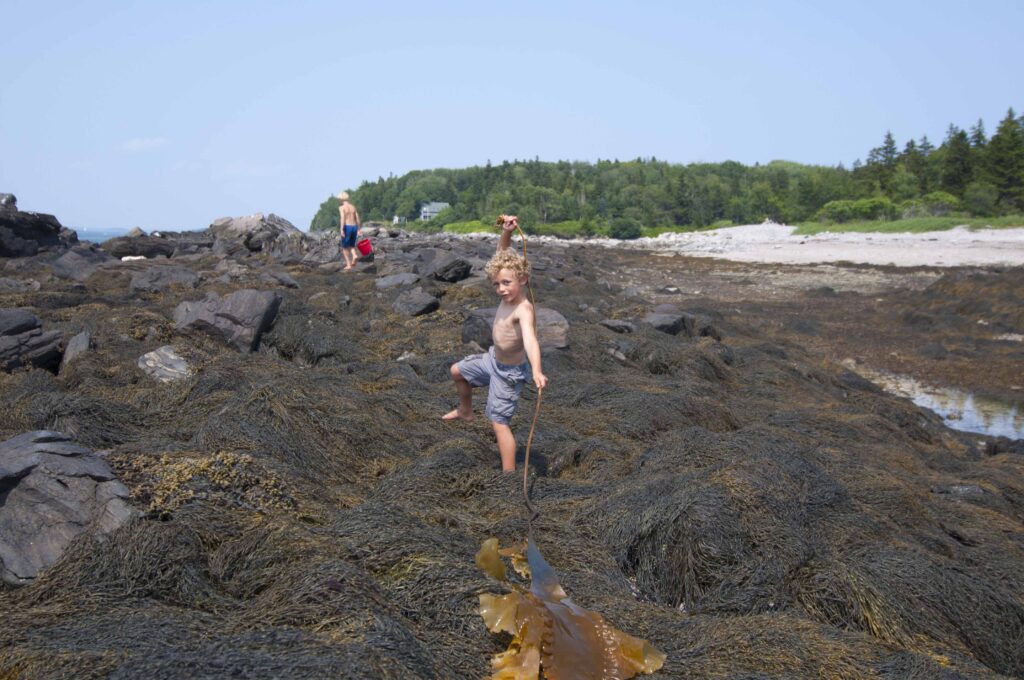
Arriving back at the beach, Rufus tells me that “everyone wants to live on this island.”
“We have friends, they come out and they want to get a house here. That would convince you to come out here, right?”
I tell him yes, but I’m curious if he ever wonders about the effects on island life of all the visitors. It’s a dilemma that hasn’t failed to appear in my five years of doing these summer visits. On the one hand, these safe and tight-knit island communities represent bastions of hospitality, many of which rely on the summer influx of visitors to stoke their local economies. On the other hand, whether you’re talking about long-time summer islanders or year-rounders, most of the folks you find have come to these communities seeking refuge from the crowds. And despite how welcoming the locals are (and most I’ve met, as Rufus has pointed out, are really nice), it’s impossible not to feel that underlying everything is a sort of us-and-them mentality.
Crossing Rocky Beach, the boys sum it up eloquently.
“If too many people come out, you’d have too many cars,” says Rufus. “You’d have paved roads. And I think dirt feels a lot nicer on your feet and it just looks better than the black pavement.”
“I hate paved roads,” Cole adds.

When I finally meet Casey MacVane she tells me, “It’s so nice that you guys were able to come out here today.” Whether she means the three picnicking Portlanders or specifically me in my capacity as writer is unclear, but it’s obvious that she welcomes visitors to the island she calls home. Still, when I mention busier, more populated Peaks Island and ask if it’s good if my story encourages more visitors to come to Cliff, she looks down and gives me only a reluctant smile.
It was at that point that Rufus, standing nearby, interjected. “Too many people frogging, frogs are gone. Too many people fishing, fish are gone,” he said.
And there have been growing pains on Cliff.
“There’s only 45 of us in the winter, and it gets crowded quick” in the summer, said store owner Bill. “I grew up with a bunch of kids whose families owned houses on the island and there was a lot more year-rounders back then.” Over time, he explains, “the older people started to pass away, the families sold the houses. People bought ‘em and now they’re not year round. They’re renting them weekly.”
It is slowly becoming a vacation community, at least in Bill’s opinion. And one problem with that is when “people come out for a vacation, they don’t know that we’re part of the city of Portland. They see there’s no roads and they think there’s no rules or laws or anything. It can get nerve-wracking.”
Still, it doesn’t appear that Cliff Island is approaching a tipping point any time soon. On Cliff, “you can just let your kids run around all day. Everyone knows everyone else here. This is still a very small community,” says one year-round resident who prefers not to be identified.
Proving her point are the gang of island kids, Rufus and Cole among them, preparing to leap from the ferry landing. (Earlier, when I asked him what my friends and I should do on the island, the elder MacVane exclaimed: “You could take photos of me jumping from the dock!”) Other children, probably too young to take that larger leap, are no less independent, racing back and forth between the wharf and the general store.
My source’s point about the cozy and quiet nature of the island is further exemplified. Wanting to change into my bathing suit (hey, maybe I’ll take the plunge myself) I ask if there’s a nearby public restroom.
“You can use the one in the community center,” she says, motioning behind her to the multipurpose building beside the public tennis courts, “but that’s typically only open” when there are events going on.
“Or you can just go behind the building. That’s what most people do.”
But it’s not all quaint and cozy, and the downsides seem to be felt most acutely by those islanders in the teen-to-young-adult range. Samantha and Olivia Crowley, friends of Rufus and employees at Jenn’s Cliff Island Store and Cafe, put it succinctly.
“We’ve lived here all our lives. It has its ups and downs for sure,” said 18-year-old Samantha. “Socially it can be challenging.”
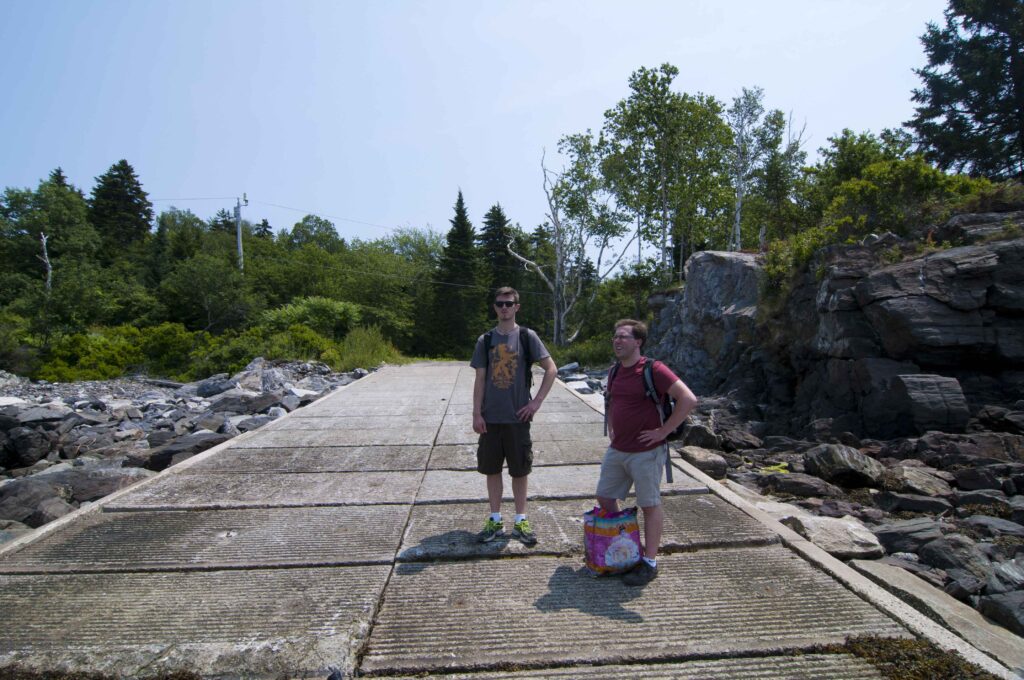
I asked the girls what specific things were challenging about growing up here.
“Most of our friends are in Portland,” added 15-year-old Olivia. “We don’t have very many boats a day so it’s hard to see them.”
And it makes sense that most of the girls’ friends are on the mainland, since there are only about a dozen children on the whole island. (“I was the only one in fifth grade when I graduated,” said Olivia.)
The island’s single school runs kindergarten to grade six, at which point the kids must start commuting to schools in Portland. This means that not just socially, but logistically, things get more difficult.
“We start going to school in Portland in sixth grade, so we have to wake up to get on the 6:10 boat every morning. And if you do any sports or anything you don’t get home till 7,” Olivia explained.
And you miss out, said Samantha, since “there are a lot of (school) activities that are after 5:45, which is the last boat. It’s a lot more logistics that we have to plan around.”
Is it worth it?
“Well, I’m probably moving off this fall to get a job in town,” said Samantha.
“You really can’t get a job in Portland, like a full time job, and do the commuting thing,” Olivia adds.
“But yea,” Samantha continues, “I’ll probably come back. I mean, my family is here. It’s a great community because you know everybody and everybody knows you.”
And the flip side?
“Oh yea, everybody knows your business,” Samantha said. “Everyone knows everyone else’s business. Everybody knows everything about you.”
So there are the logistical challenges, the very physical difficulties of living disconnected from the mainland, and then there are the social challenges, the fewer connections, the lack of privacy, the sometimes stifling intimacy.
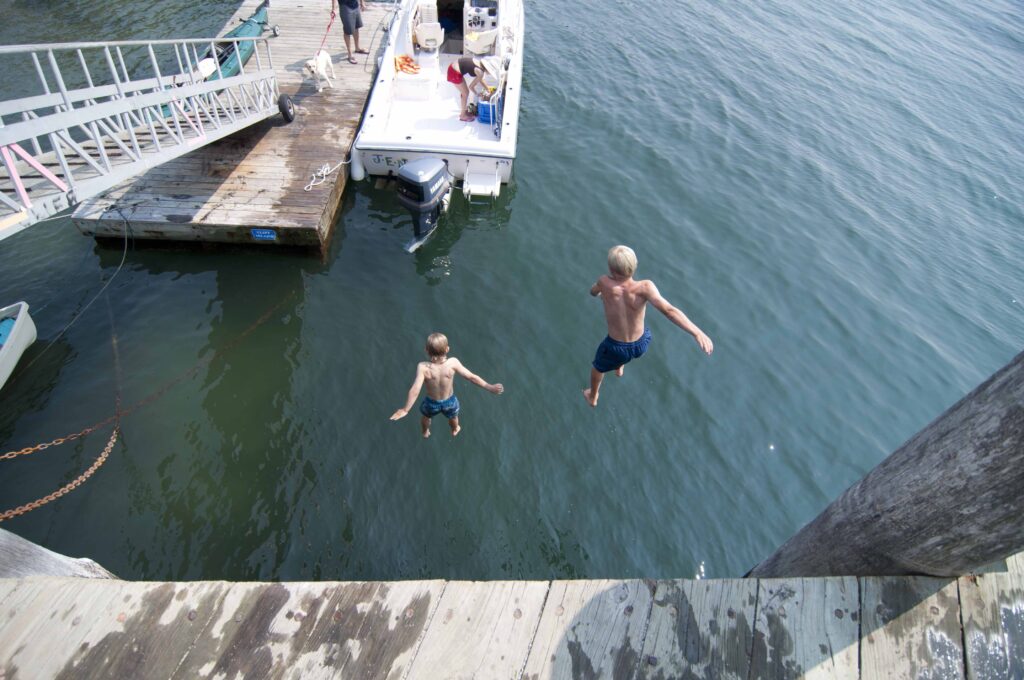
And yet these are the very things that appeal so much to the sensibilities of the islanders; the quiet, the peacefulness, the friendliness and hospitality. And they are the same things that draw the average visitor to Cliff, whether staying for a day or a month. But whereas the visitors returns to their relatively hectic and private lives, this place remains home for the denizens of Cliff Island, a home that loses its advantages, albeit slowly, as more people come to experience them.
At nine, Rufus didn’t seem to be too bothered by the sometimes overly intimate nature of the island. Nor, for that matter, was he bothered by the logistics of island living. Not yet, anyway.
“I think it’s great and I think that, you know, it’s way different than the mainland. I’d be a different person (growing up there).” And personable as he is, he’s quick to add – and this might be what makes him a true islander – “I have my friends out here, but I’m not a fan of having too many people.”

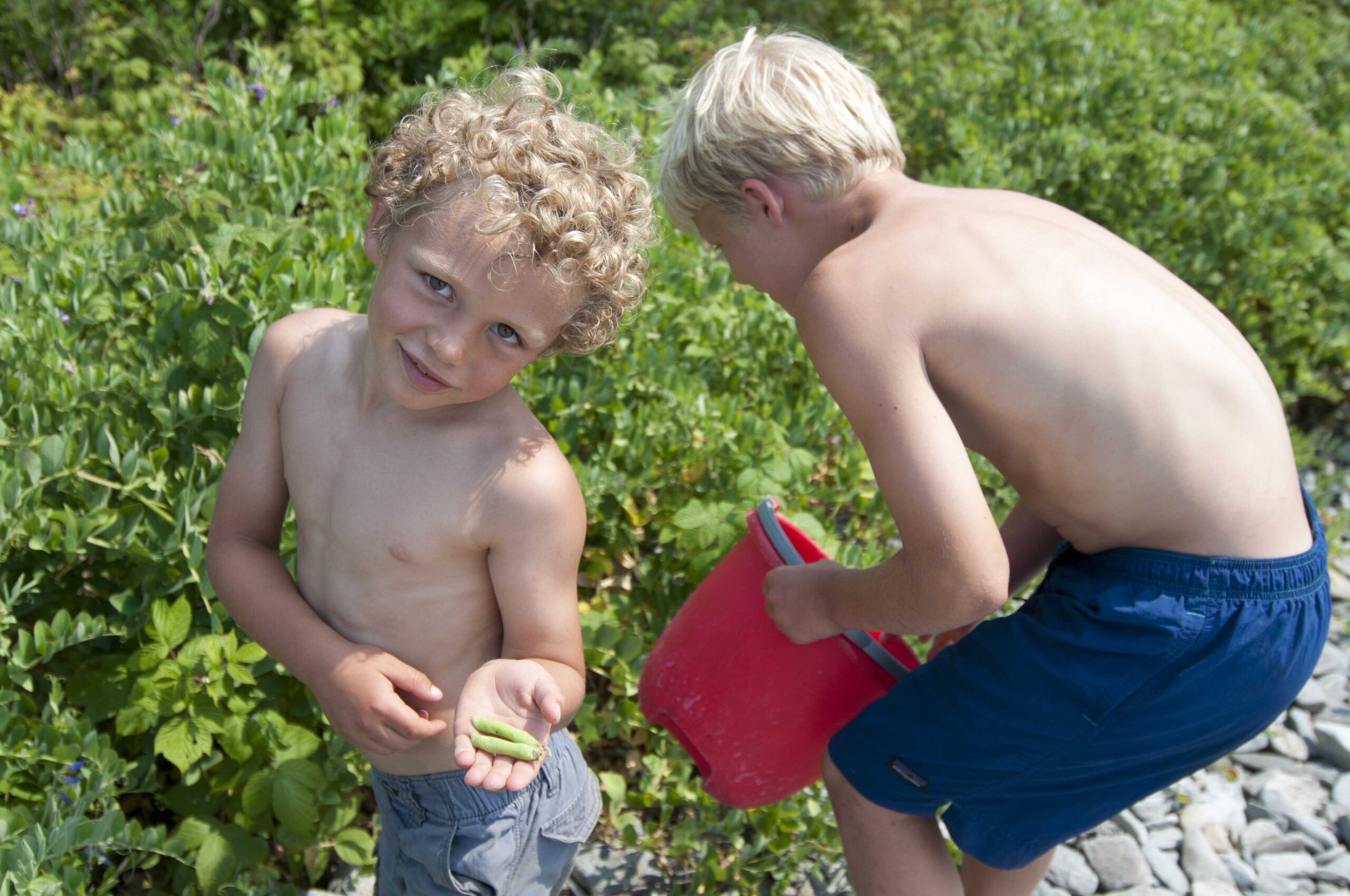


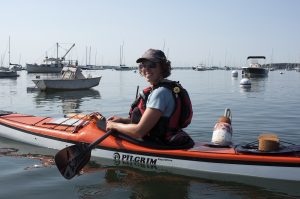
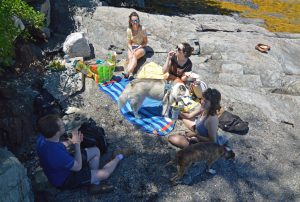



Comments are closed.